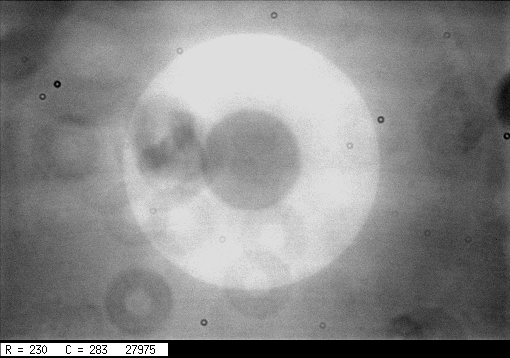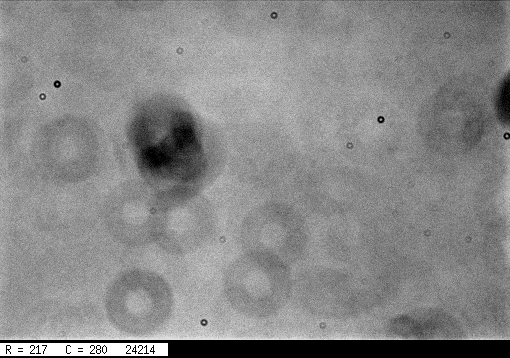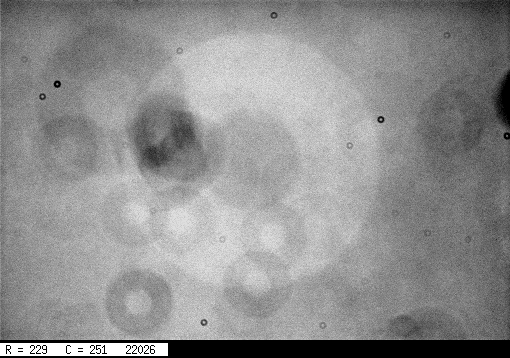
I've noticed a strange pattern in the I-band flatfields taken at the RIT Observatory. Our equipment:
On several nights recently, I've taken twilight sky flats just after sunset. The flats look different through each filter (no surprise), though there are a few common features. There are some big donuts, caused by dust particles on the CCD window, and some very small, sharp donuts, caused (I think) by dust particles on the CCD itself.
But what really puzzles me is the sharp image of the telescope aperture in the I-band flats (and, to a lesser extent, B-band flats). The LX-200 is a Schmidt-Cassegrain telescope: it has a correcting lens at the front of the tube, with a secondary mirror glued to the center of the lens. The I-band flat shows a very sharp, well-defined image of this aperture-with-central-obstruction: the open portions of the aperture are bright, and the central obstruction is dark. See for yourself: in the pictures below, white areas represent bright portions of the frame, and dark areas dark portions of the frame. The range from pure black to pure white is about 5 percent of the mean level (about 1200 counts black-to-white, about 25,000 counts mean level in the image).
I-band flat:

Any ideas what might be causing this pattern? I suspect some sort of internal reflection, but I don't know where. If you know, please send me your guess at mwrsps@rit.edu
For reference, here are the flats in the other filters. Note that the sharp "aperture pattern" appears in the B-band flat, too. Why B-band and I-band? It seems strange that the pattern appears strong at both ends of the optical range, instead of at just one.
R-band flat:

V-band flat:

B-band flat:
